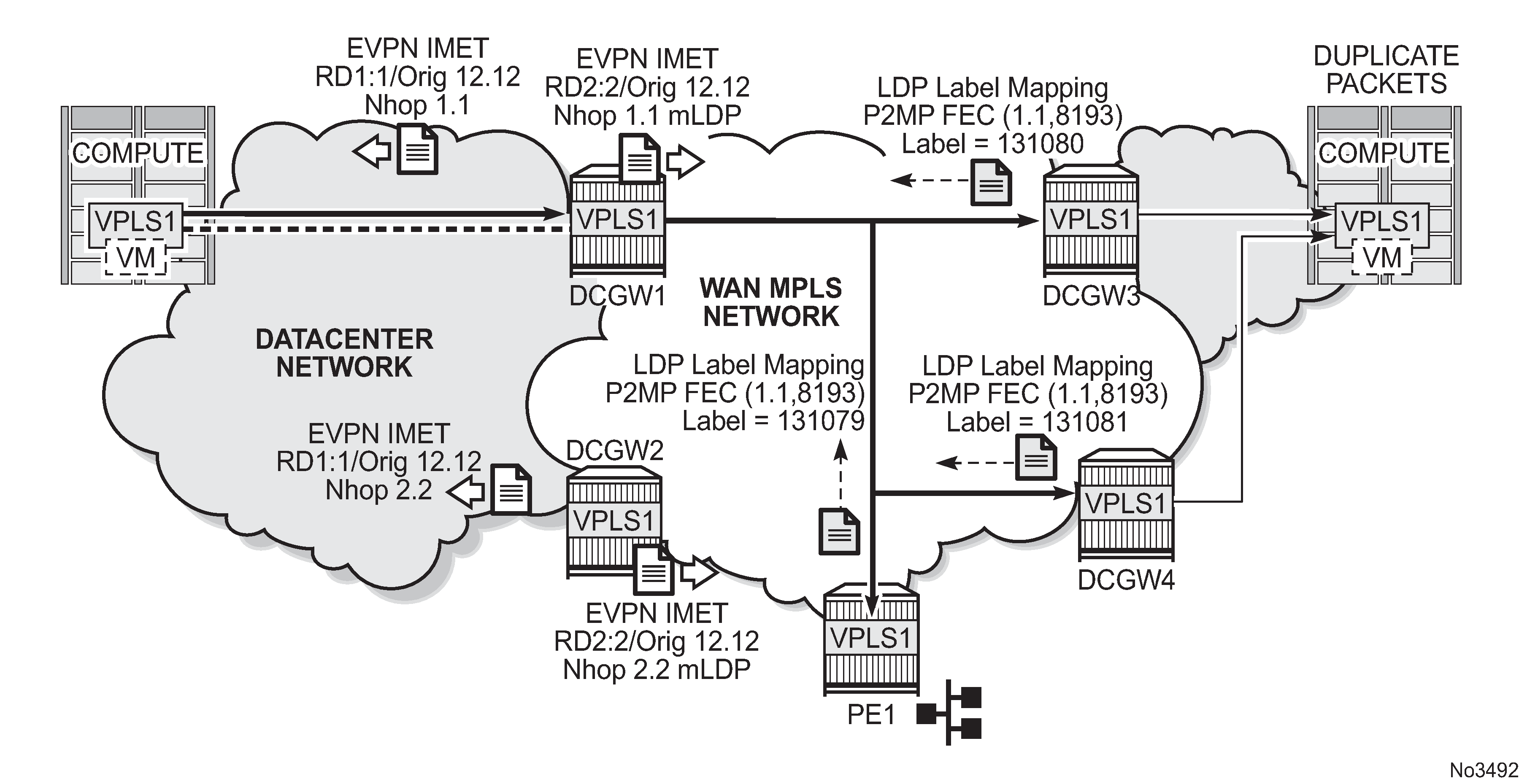Figure: Anycast multihoming and mLDP shows an example of a common BGP EVPN service configured in redundant anycast DCGWs and mLDP used in the MPLS instance.

When mLDP is used with multiple anycast multihoming DCGWs, the same originating IP address must be used by all the DCGWs. Failure to do so may result in packet duplication.
In the example shown in Figure: Anycast multihoming and mLDP, each pair of DCGWs (DCGW1/DCGW2 and DCGW3/DCGW4) is configured with a different originating IP address, which causes the following behavior:
-
DCGW3 and DCGW4 receive the inclusive multicast routes with the same route key from DCGW1 and DCGW2.
-
Both DCGWs (DCGW3 and DCGW4) select only one route, which is generally the same, for example, DCGW1's inclusive multicast route.
-
As a result, DCGW3 and DCGW4 join the mLDP tree with root in DCGW1, creating packet duplication when DCGW1 sends BUM traffic.
-
Remote PE nodes with a single BGP-EVPN instance join the mLDP tree without any problem.
To avoid the packet duplication shown in Figure: Anycast multihoming and mLDP, Nokia recommends to configure the same originating IP address in all four DCGWs (DCGW1/DCGW2 and DCGW3/DCGW4). However, the route distinguishers can be different per pair.
The following behavior occurs if the same originating IP address is configured on the DCGW pairs shown in Figure: Anycast multihoming and mLDP.
-
DCGW3 and DCGW4 do not join any mLDP tree sourced from DCGW1 or DCGW2, which prevents any packet duplication. This is because a router ignore inclusive multicast routes received with its own originating-ip, regardless of the route-distinguisher.
-
PE1 joins the mLDP trees from the two DCs.